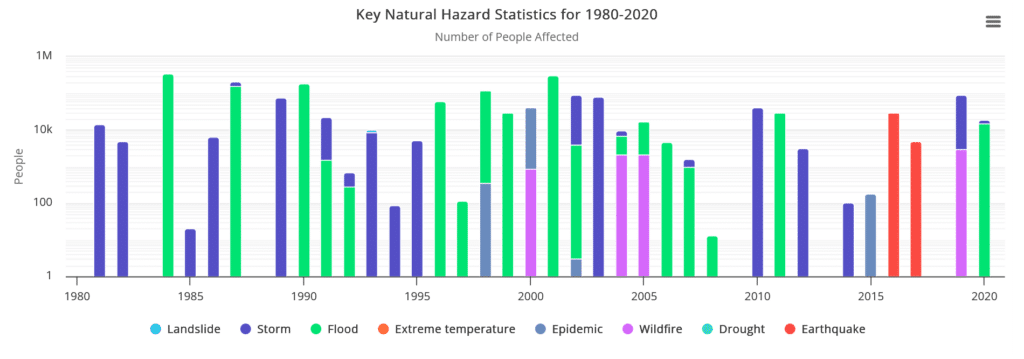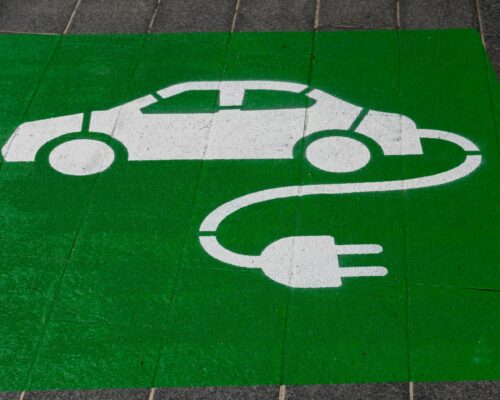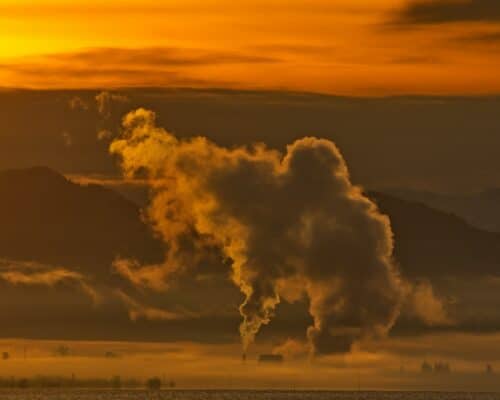South Korea’s Energy Mix: Prominent Role of Fossil Fuels
09 April 2024 – by Viktor Tachev
Despite being one of the most innovative economies, South Korea is lagging in its clean energy transition. Nowadays, the share of renewables in the South Korea’s energy mix is more than two times lower than the global average. Furthermore, Korea remains among the biggest coal polluters. And while Koreans are already struggling with the impacts of climate change, the upcoming elections and the climate pledges of participating parties show a glimpse of hope that things can soon change. The gains for Korea’s economy, energy security and population’s well-being are many.
Fossil Fuels Remain the Backbone of South Korea’s Energy Mix
In 2023, fossil fuels had a 58.5% share in South Korea’s energy mix. After Australia, the country remains the second-highest coal polluter in the G20. According to Ember, the top two coal polluter’s emissions are three times higher than the global average. The country still hasn’t unveiled its coal phase-down strategy.
The IEEFA notes that from 2016 to 2021, Korean financial institutions invested 1.3 times more in coal than in renewable energy. For comparison, the global trend is a three times higher investment in renewables than fossil fuels over the same period.
Coal and gas will continue to play prominent roles in the country’s energy mix in the future. The proposed 2030 and 2036 energy mix scenarios will still have coal and LNG responsible for over 40% and 24% of power generation, respectively. Furthermore, the country’s latest green taxonomy considers gas a green fuel.
South Korea and Japan remain the only two countries planning to use ammonia as a fuel. The move could result in costly financial, environmental and energy security implications. South Korea, in particular, aims to expand hydrogen and ammonia, including converting 24 coal plants to ammonia co-firing plants by 2030. According to experts, such a move will prolong the use of coal.
It also changed its plans to reduce emissions, including a shift towards carbon capture technology and international offsets.
Renewables With a Negligible Share
Alongside other Asian countries, South Korea has benefitted first-hand from renewables’ ability to shelter it from high fossil fuel power costs. Yet, clean energy adoption doesn’t remain a priority area in policies.
In 2022, wind and solar power had a share of just 5.4% in Korea’s energy mix, compared to a global average of 12%. The country is stalling behind its G20 Asian peers, including Japan (11%), India (9%) and China (14%). As per the current targets, renewables will be responsible for around 30% of power generation in 2036.
The government has dismissed the previous 100% renewables target, arguing that it was “too expensive”. It also lowered its 2030 industrial sector GHG emission reduction targets from 14.5% to 11.4%.
According to the IEEFA, the slow adoption of renewable power generation is a missed opportunity to reduce power prices. The organisation warns that it has also increased South Korea’s exposure to environmental externality costs.
IEEFA: Fossil Fuel Reliance and Sluggish Clean Energy Progress Become Burden for South Korea
In a dedicated analysis of the roots of high power costs in South Korea, Michelle Kim, an energy finance specialist for South Korea at the IEEFA, finds that the country’s fossil fuel reliance and sluggish clean energy progress have created interconnected challenges, covering energy security, competitiveness and sustainability.
Fossil fuel price volatility over the past years, especially within the LNG markets, paired with South Korea’s import dependence, triggered sharp increases in both fuel costs and wholesale electricity prices.
LNG, which retains a 26.8% share in South Korea’s energy mix, amounted to USD 25 billion in fuel costs in the power sector in 2022. The country was burdened with USD 17 billion in additional costs for LNG-fired power generation, compared to 2021, due mainly to its over-reliance on fossil fuels.
The IEEFA’s report finds that the country’s regulated power pricing mechanism, which intentionally kept end-user power tariffs low even in the wake of mounting fossil fuel prices, led KEPCO, the state-run power utility, to sell electricity at lower prices.
As a result, KEPCO’s already troubled financial situation deteriorated further, with the utility mounting over USD 149 billion in debt and having to issue more government-backed bonds. The IEEFA notes that the circumstances might force KEPCO to prioritise short-term solutions instead of clean energy and prevent the utility from reducing power costs.
The IEEFA’s analysis reveals that the renewable energy power capacity of KEPCO and its subsidiary power generation companies was just 1.9% of South Korea’s total. For comparison, the percentage of independent power plants was 19.8%.
The organisation also notes that the lack of competitiveness in South Korea’s domestic market has further contributed to elevated power costs and hindered sustainability goals, undermining the transition to more affordable, reliable and clean energy sources.
Renewable Energy: A Cost-competitive Option
In addition, the analysis warns that the delayed transition to renewable power generation has contributed to increasing climate-environmental tariffs. Instead of directly investing in renewable energy generation, KEPCO and its subsidiary generation companies have often preferred purchasing renewable energy certificates. The IEEFA notes that the lack of substantial clean energy investment in South Korea has increased opportunity costs since renewables are at cost parity with conventional power sources.
Yet, according to TransitionZero, the LCOE from renewables plus storage in South Korea is already below the cost of gas-fired power. Bloomberg NEF estimates that the electricity generation costs for solar energy in South Korea will equal those for coal around 2027.
Additionally, the IEEFA warns that the delayed deployment of renewable energy and continued reliance on fossil fuels could lead to significant financial consequences resulting from negative externality costs related to global climate initiatives. Carbon tariffs, trade barriers, limited access to capital and higher energy production costs all risk increasing power costs in the country.
Climate Change’s Impacts on South Korea Call For Swift Action
Accelerating the energy transition is not only a question of enhancing energy security and reducing power costs. It is also imperative to improve the country’s climate policies and to help it do its part to slow global temperature rise and tame climate change’s worst impacts – a problem that South Korea is highly vulnerable to.
By 2050, heatwaves in South Korea will last 1,563% longer. According to the G20 Climate Risk Atlas, on a high-emission pathway, temperatures in South Korea could increase by as much as 2.5°C by 2050. This is a major concern for South Korea and its rapidly ageing population, as older adults are the most vulnerable to heat stress. Furthermore, temperature rise makes extreme rainfall more likely.

Yet, at the same time, Climate Action Tracker rates South Korea’s current climate targets and policies as “highly insufficient”. Furthermore, Korea remains among the worst performers in the Climate Change Performance Index 2024, sitting at the 64th position out of 67 ranked countries.
Changing Course Possible But Requires Political Ambition
The government has a lot of work to do to unlock the gains of the clean energy transition. South Korea remains way out of line with the global climate goals stipulated in the IEA’s Net Zero Emissions scenario. Changing the situation requires reaching a net-zero power sector by 2035. Furthermore, the shifts should be steep and immediate.
The IEEFA’s report identifies several crucial steps the country should take to ensure it won’t miss out on the potential cost reductions for power generation.
The starting point is ensuring the country’s energy security by tackling its fossil fuel dependence and protecting it against global market disruptions and their implications on fuel import prices. Currently, the country’s score is 20.2%, one of the lowest in Asia.
As a second step, the IEEFA advises addressing the structural issues in the local power market that have hindered competitiveness, exacerbated financial troubles at state-owned energy companies and negatively affected innovation and cost reduction incentives. Crucial in this step is reforming power pricing to reflect actual costs and avoid politically motivated determinations of electricity tariffs.
The third and most important step is accelerating the transition to clean energy to avoid missing out on significant power generation cost reduction opportunities and ensure there won’t be delays in achieving the declared decarbonisation goals. A key part of this step is also addressing KEPCO’s financial troubles through cost-cutting measures and renewable energy-focused innovation, the IEEFA notes.
Shifting Course Post-election Remains Crucial
On April 10, South Koreans will go to the polls in a general election to decide who will hold the 300 seats in the National Assembly. While the competing parties are divided on many policies, they have all recognised the importance of making climate policies the central focus of their agendas. Both conservatives and liberals have come up with green policies. Climate change will also prove to be a non-partisan issue for voters. The situation is very different from that of other advanced economies, as well as Asian countries, where either political parties, voters or both have conflicting views regarding climate policies.
Competing parties all agree that the share of clean power sources in South Korea’s energy mix should be increased and that Korea should accelerate its net-zero journey. Furthermore, they have been actively recruiting candidates with climate expertise and have all promised to establish a permanent Special Committee on Climate Crisis.
While these are all promising signs, it remains to be seen whether the election winner will follow through with concrete action once in power. Nationwide polls reveal that 33.5% of voters identify as climate voters and nearly two-thirds would consider voting for a candidate or party with favourable climate policy pledges, even if they diverted from their political views. In that sense, ambitious climate change mitigation and adaptation policies have the potential to tip the scales in one’s favour. However, using them only as a tool to garner votes before the elections and not as a long-term strategy can be a dangerous move for Korea’s economy, environment and the well-being of its population.
by Viktor Tachev
Viktor has years of experience in financial markets and energy finance, working as a marketing consultant and content creator for leading institutions, NGOs, and tech startups. He is a regular contributor to knowledge hubs and magazines, tackling the latest trends in sustainability and green energy.
Read more






